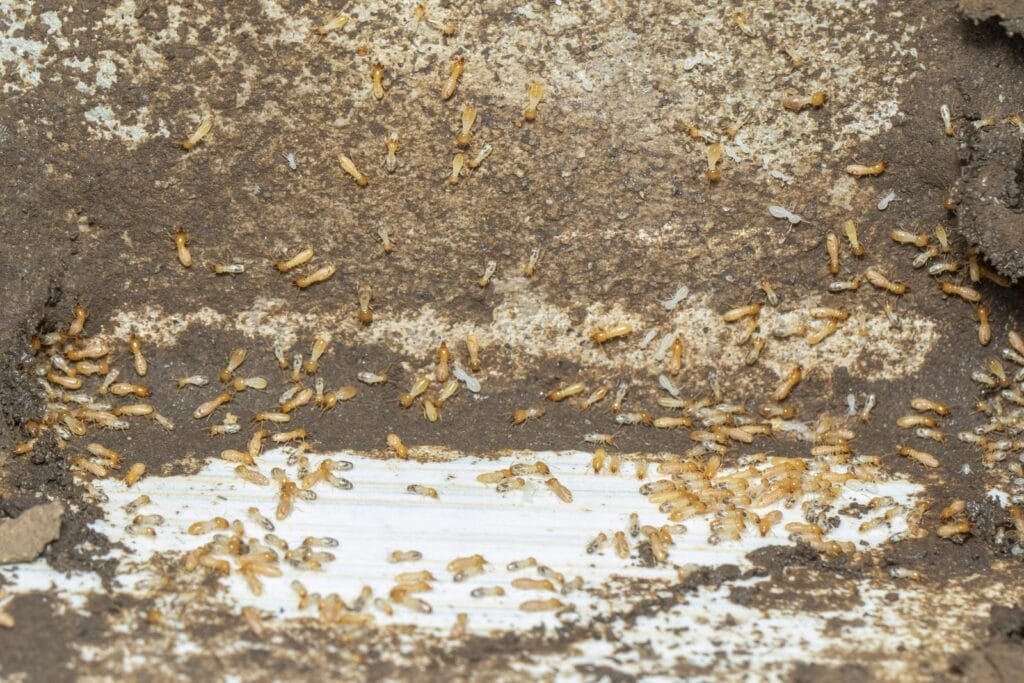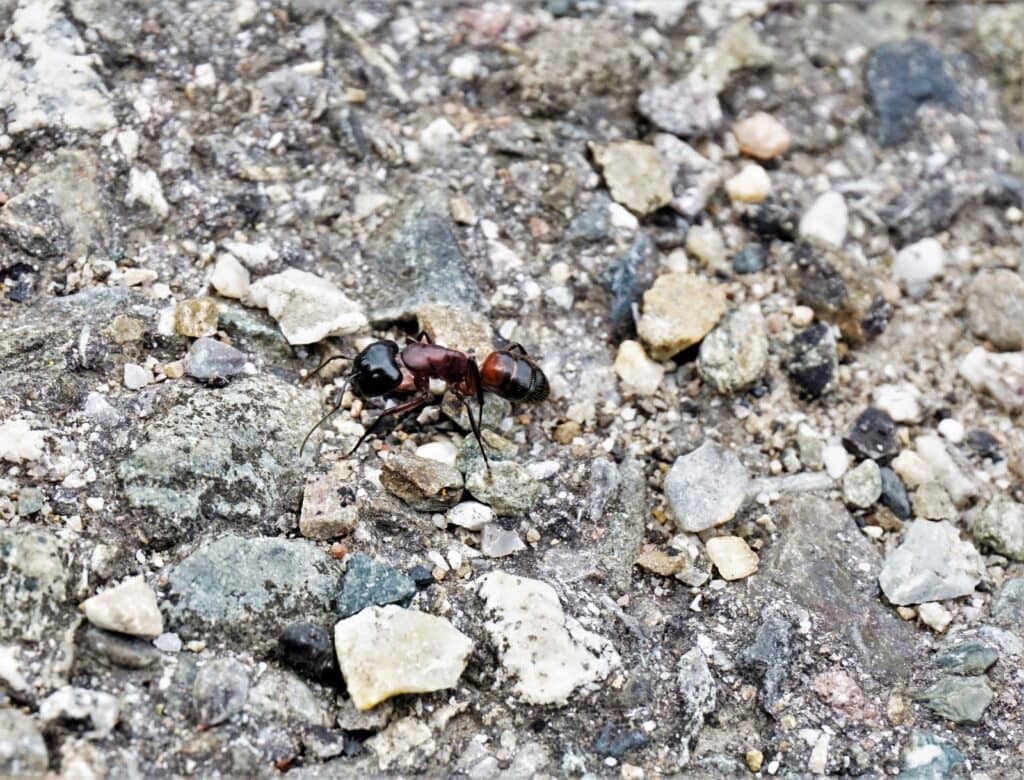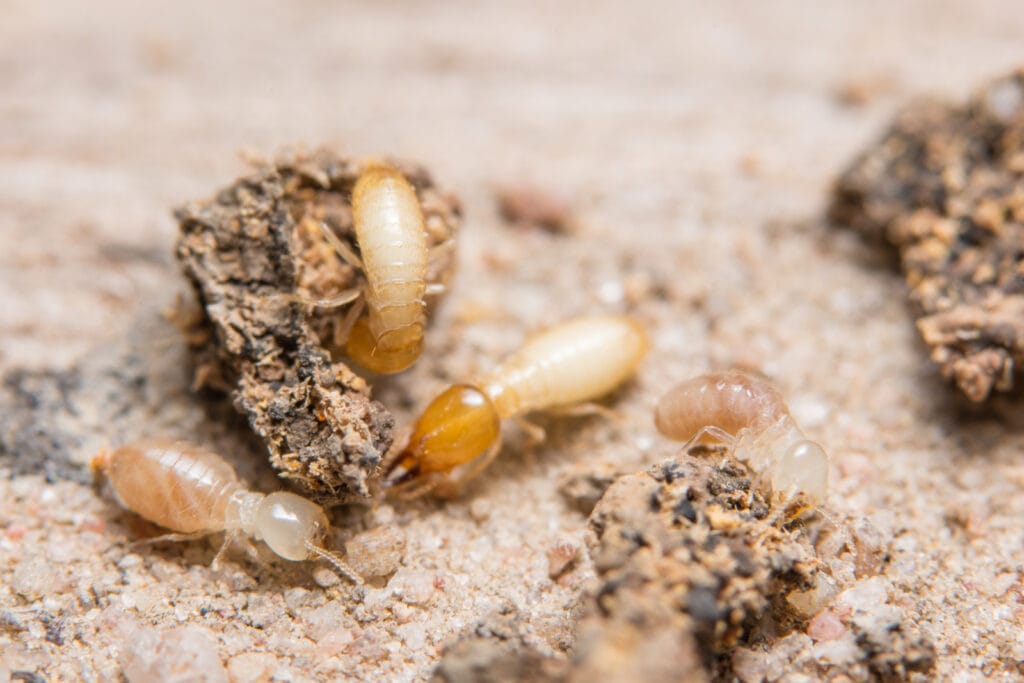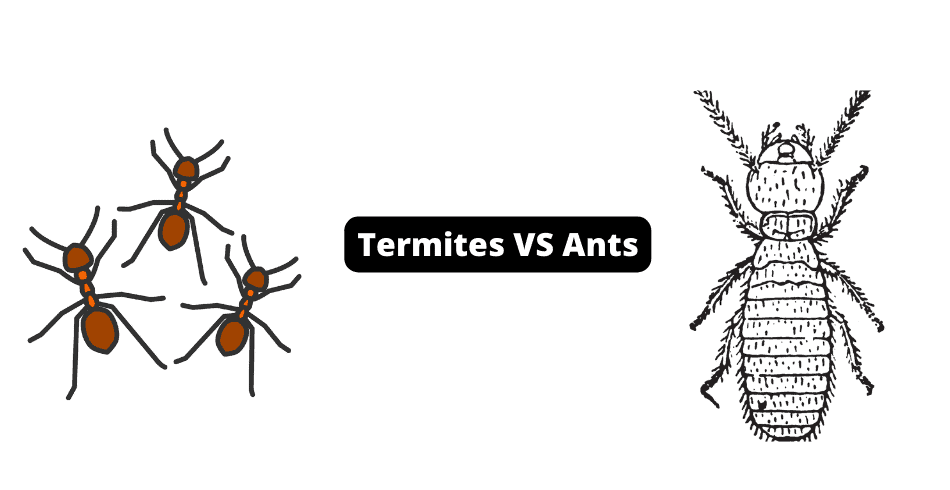People often mix up ants and termites, but they are two very different kinds of insects.
In this article, we will give a deep dive into the differences between these two creatures, giving you enough information so you are fully equipped to understand what type of infestation you’re dealing with.
We’ll also provide some practical strategies for eliminating them as well.
Stay tuned!

Termites vs. Ants: the difference between ants and termites
Carpenter ants and termites have a lot in common, including that they are both known for destroying wood in homes.
Furthermore, homeowners who see swarms of either carpenter ants or termites in the spring sometimes mistake them for one another.
Termites live far longer than ants because their life cycle is much more prolonged.

The queen of a colony of termites can live for more than 30 years; the worker and soldier termites have a lifespan of one to two years; the reproductive swarmers survive for three to four years.
While the queen carpenter ant has a lifespan of up to ten years, males only survive for a few weeks, at most a few months, before they mate and die.
Termites can cause extensive structural damage to a home in as little as two to four years.
Carpenter ants also cause damage over a long time, but they are easier to spot because they gather in damp places and can easily be seen while they scurry about.
Relevant Viewing
Physical Differences Between Termites and Ants
You may identify the insect perpetrator if you can get a good look at the affected regions with a flashlight or magnifying glass.
There are specific physical differences between carpenter ants and termites, so closely inspecting the locations you find can help you set up the proper pest treatment plan.
Examine the insect’s antennae, wings, body structure, and colors for clues.
Body Shape and Antennae
Most of the distinction between carpenter ants and termites can be seen in the abdomen.
A termite’s abdomen is more rectangular since it lacks a waist or doesn’t narrow in the middle.
Like other ants, carpenter ants have a slim waist and a thin abdomen.

They also have different-shaped antennae. Although ants and termites use their antennae as feelers, ants have elbowed antennae, while termites have straight antennae.
These different features can help you figure out what you’re dealing with on-site and immediately start the proper pest control treatment.
Wings
Even though each insect has four wings, you can tell them apart by the pattern and size of their wings.
The wings of termites are uniform in size and shape and are noticeably longer than the insects’ bodies.
Since termite wings are so delicate, they often break off and pile up around the nest’s opening.
If you see these loose wings near a hole, it could mean that there are termites there.
On the other hand, the wings of carpenter ants are more in proportion to the rest of their bodies, and the front and back of the ant’s body have distinct wing sizes.
The forewings are big, while the hind wings are shorter.
In addition, ant wings seldom shed, so you won’t be able to spot a nest just by looking for signs of wing loss.
Colour
Carpenter ants are the same color as the regular ants you could find in your house; they are a dark reddish brown.

They are a darker brown than termites, which are white because they never leave their nests to forage for food.
Termites don’t like light, so they are paler than ants.
Key Takeaways
- If you don’t know what to look for and how to tell them apart, it’s easy to mistake termites and ants for each other.
- Termites can cause significant structural damage and are characterized by their pale, waistless bodies and preference for a wood diet.
- Carpenter ants don’t eat wood. They are also darker in color.
Relevant Viewing
Termites and Ants: Behavioural Differences
Both termites and carpenter ants have different ways of dealing with wood.
So, if parts of your home’s furniture have been damaged, it’s not a big deal if you can’t find any actual bugs in or near the affected area.
The way these pests have affected the wood and the damage that has resulted still allow you to identify them.

Termites, for instance, consume the wood used to construct their nests.
It’s true that unless you invade their nests, termites are difficult to spot and locate.
They consume the wood they require to build their nests; thus, they leave behind very few noticeable wood shavings.
Termites dig mud tunnels through the wood they live in for easier transportation.
Their tunnels are rough and filthy, contrasting with the neat tunnels built by carpenter ants.
An untreated termite infestation can cause significant damage since the insects will chew up a nest and continue to nibble away at the wood until the structure collapses.
Unlike termites, the main aim of a carpenter’s ant’s drill is to excavate its nest, and these ants preferentially attack wood that is already wet, damp, or damaged.
Since carpenter ants don’t eat the wood as they go and must still locate an exit to scavenge for food, they produce a lot of wood shavings.
Carpenter ants, instead of termites, are responsible for wood shavings around a building’s foundation.
The presence of termites can be confirmed if the damaged wood is severely ragged and covered in mud.
Sometimes, people confuse termites with pharaoh ants. See below for the slight difference, as pharaoh ants are slightly skinnier.

How to control an ant or termite infestation
We’ve seen that despite their apparent similarities, termites and ants are, in fact, very different pests that need to be dealt with in very different ways.
When it comes to getting rid of destructive pests such as these, it is crucial to identify them correctly and act immediately.
If you suspect a termite or ant infestation in your home, contact a pest control expert; they know what they’re doing and can provide an effective and long-lasting solution to your pest problem.
Key Takeaway
- It’s essential to identify the type of insect you’re dealing with before deciding how to handle the infestation. A professional exterminator, however, will be familiar with the best strategies for eradicating the pests in question.

